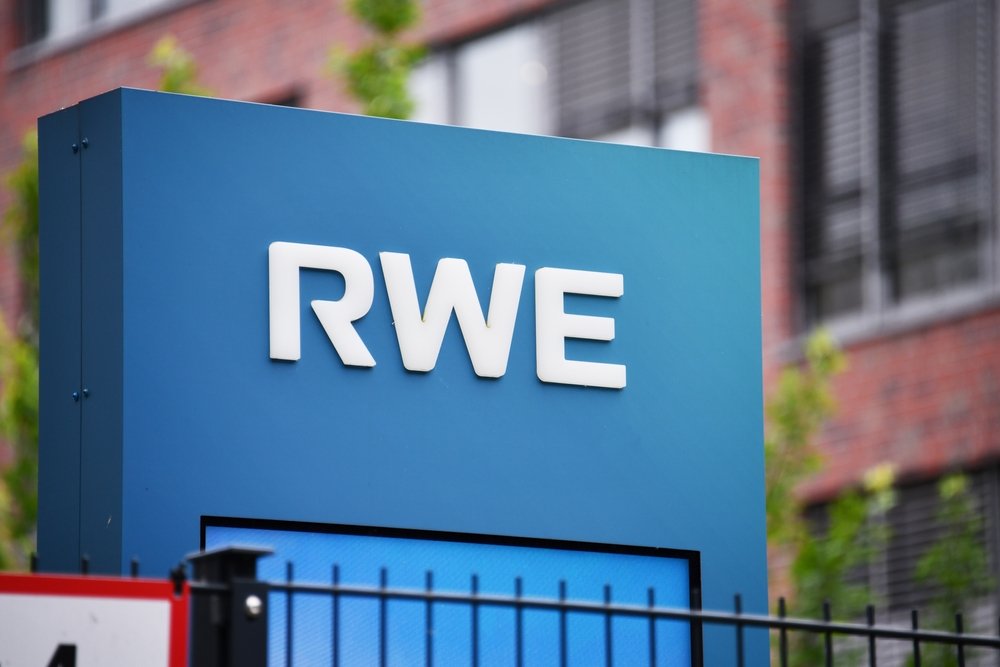Weak winds, declining trading business, and unfavorable weather conditions weighed on RWE’s results in the first half of the year. Despite higher electricity production, the Essen-based energy group is still aiming for an annual profit of up to €5.15 billion. Adjusted earnings before interest, taxes, depreciation, and amortization (EBITDA) fell significantly—from €2.9 billion in the previous year to €2.1 billion. (handelsblatt: 14.08.25).
Bad wind affects offshore yields
“We have achieved half of our annual target and are therefore confirming our forecast for 2025,” explained RWE CEO Markus Krebber when presenting the figures. This did not spark enthusiasm on the stock market: the share price temporarily lost more than four percent. The main reason for the decline in earnings was weak wind in Europe. Offshore electricity production fell from 5.8 to 4.4 gigawatt hours. RWE CFO Michael Müller also pointed to lower electricity prices on the stock market and geopolitical tensions, which weighed on trading. As a result, EBITDA fell by more than €700 million.

“The market is driven by geopolitical events, and in such an environment, our traders are reducing their positions and waiting to see what happens,” Müller explained. In July, however, the results were back in line with expectations.
Debt rises – investment falls
Operating cash flow plummeted in the first half of the year – from a surplus of €457 million to a deficit of €1.2 billion. At the same time, investments rose by €200 million. Net debt increased by more than €4.4 billion to €15.5 billion. RWE had originally planned to invest around €55 billion in wind, solar, batteries, natural gas, and hydrogen by 2030 as part of its “Going Green” plan.
This sum has now been reduced by ten billion euros. At the same time, a share buyback program totaling 1.5 billion euros is underway to appease dissatisfied investors. “We are currently in the second tranche of a total of three,” Müller explained. RWE is buying back shares worth 500 million euros per tranche.
Investor skepticism
Some major shareholders consider the investments too high despite the reduction. According to investor circles, RWE plans to invest twice its market value in the coming years – a risky approach in uncertain times. “We have so far managed to largely avoid the customs risk for the current expansion,” Krebber recently emphasized. However, this must remain guaranteed for every new investment decision.
Additional uncertainties are weighing on the US renewable energy market. President Donald Trump’s “Big Beautiful Bill” tax law stipulates that all subsidies for new wind or solar projects will be eliminated starting in 2027. Experts expect this to lead to a massive decline in demand.
Risks in the US market
This would be particularly problematic for RWE. Two years ago, the company acquired US solar company Con Edison for €6.8 billion, becoming the second-largest operator of solar parks in the US. Over 40 percent of its green electricity now comes from North America. A large part of the investments also went there. However, RWE took action after Trump imposed a moratorium on new offshore parks. Although electricity demand in the US is growing faster than almost anywhere else, political uncertainty is slowing down new projects. “We are setting higher requirements for future investments in the US,” Krebber emphasized at the annual general meeting.
Hope on the German market
The group is currently somewhat more optimistic about Germany. A few days ago, Economics Minister Katherina Reiche (CDU) announced that the EU had apparently given the green light for some of the planned new gas-fired power plants. If the planned reforms for cost-efficient expansion of renewables, a stable power grid, and greater industrial competitiveness take effect, RWE could envisage additional investments at the site, Krebber emphasized.
